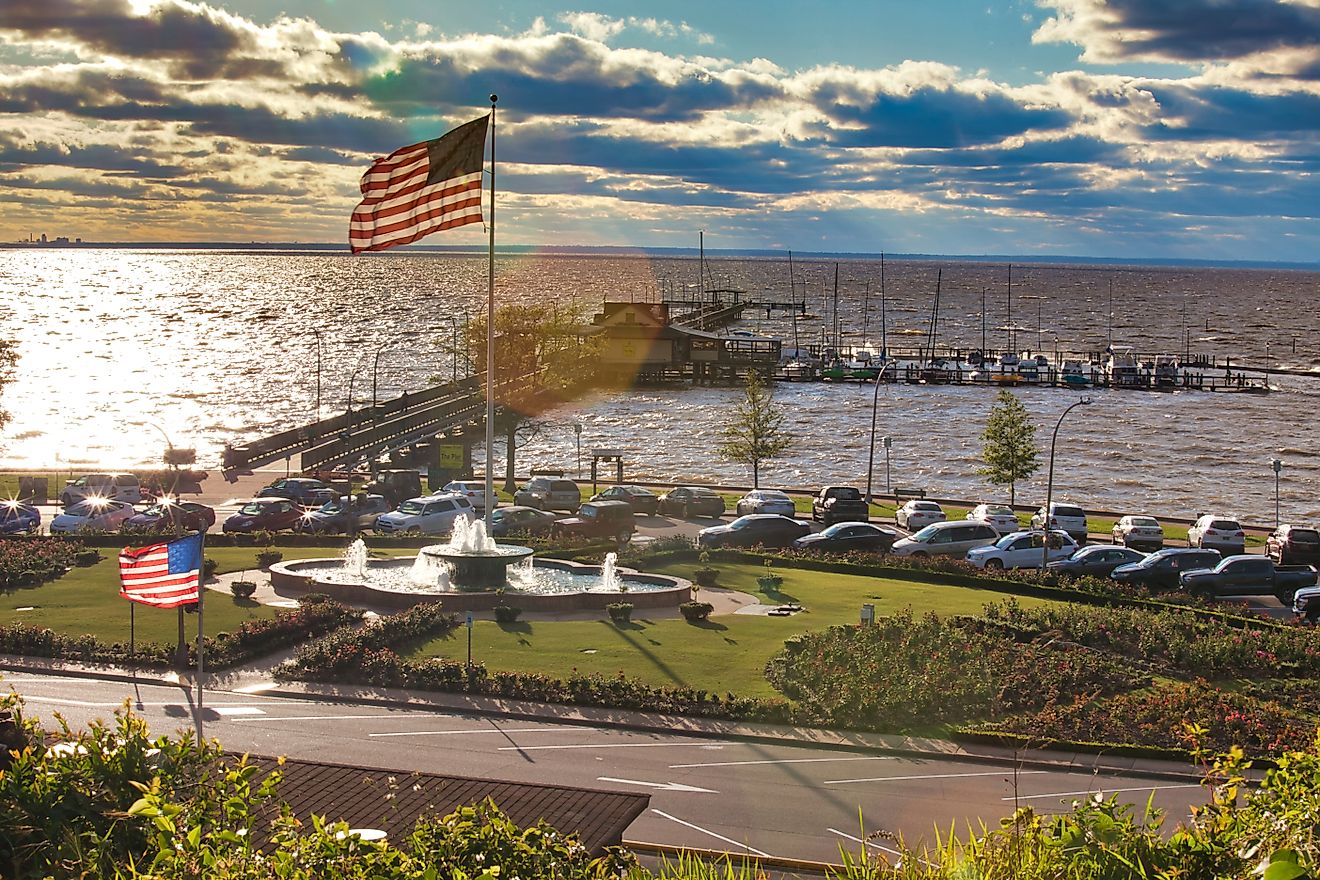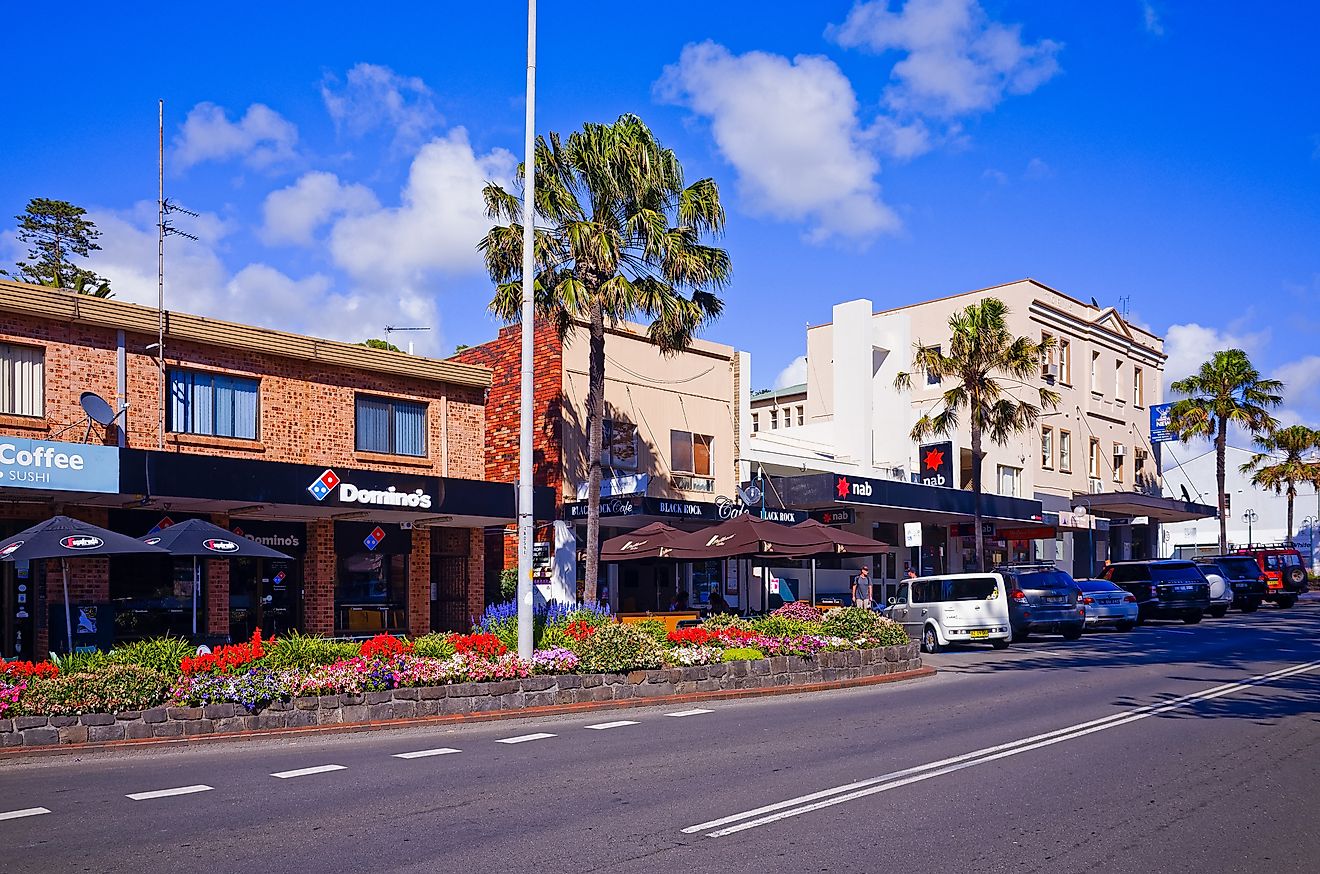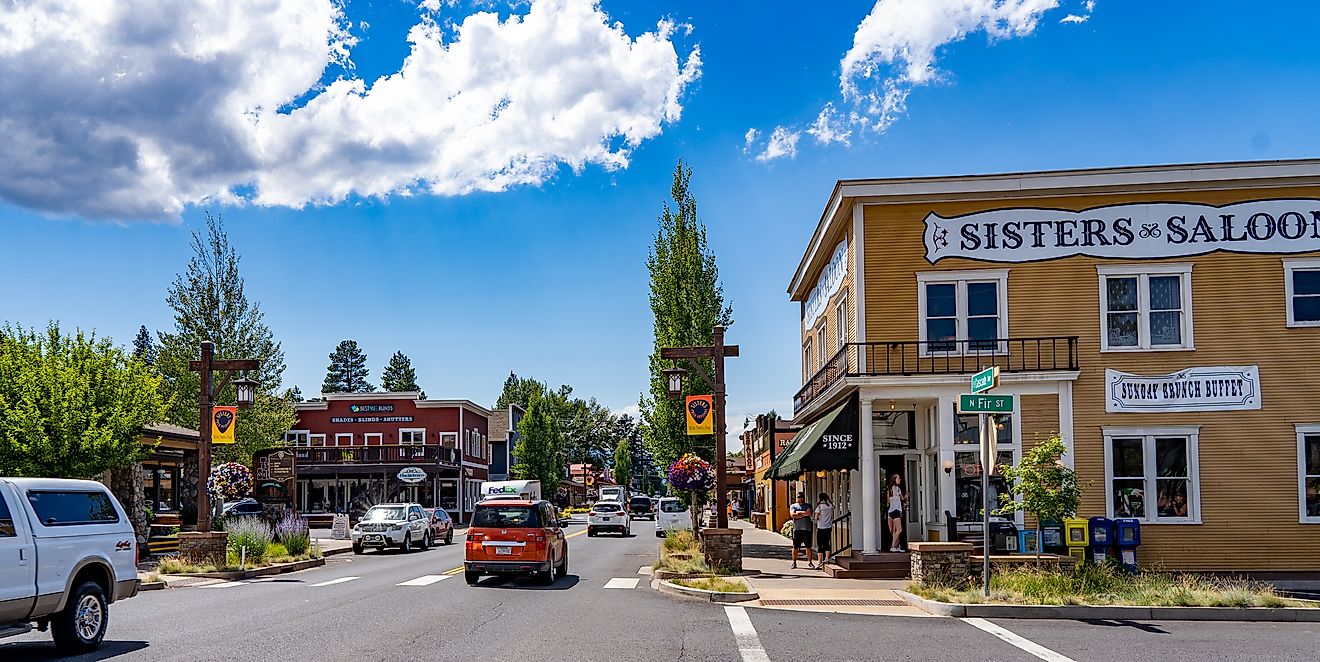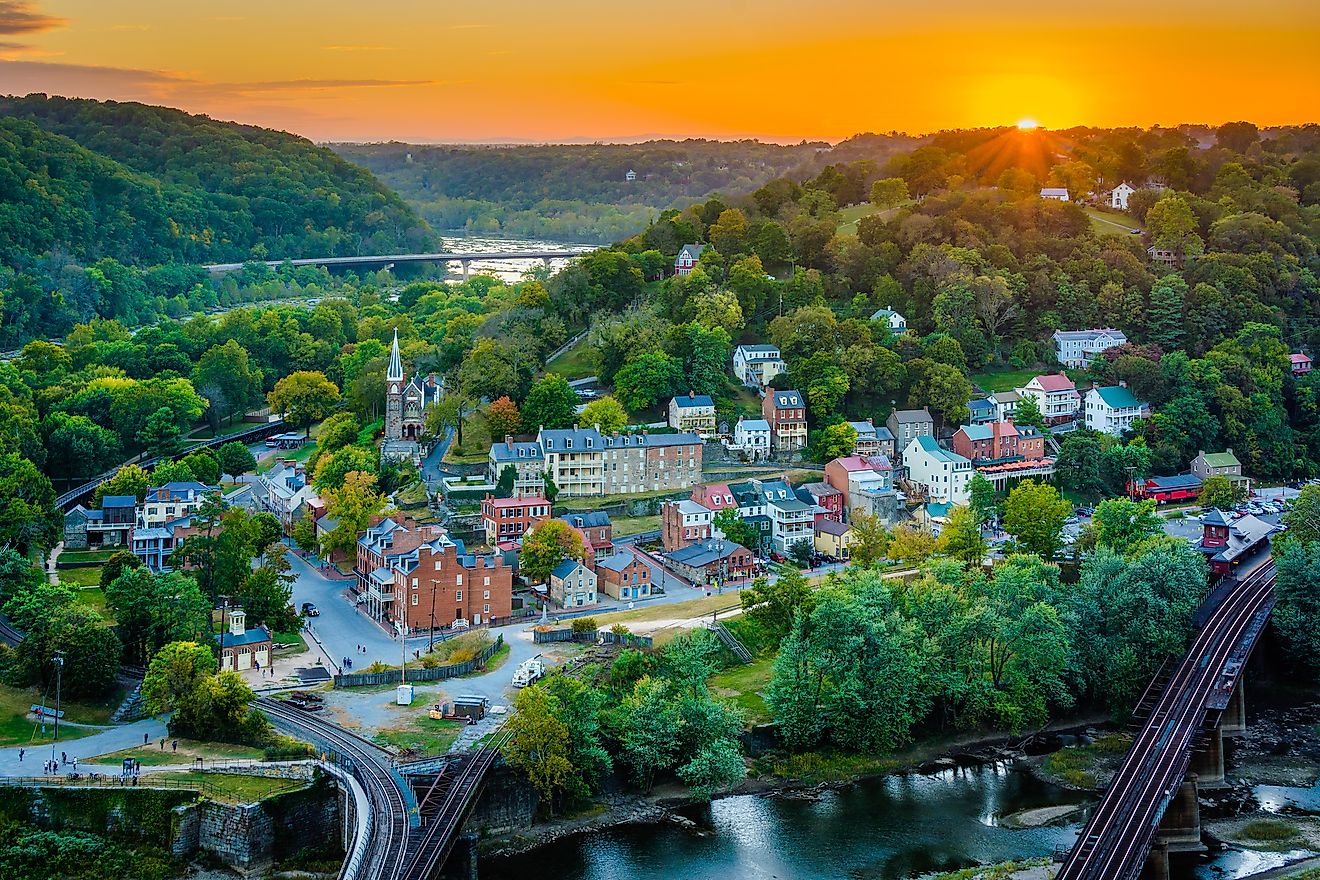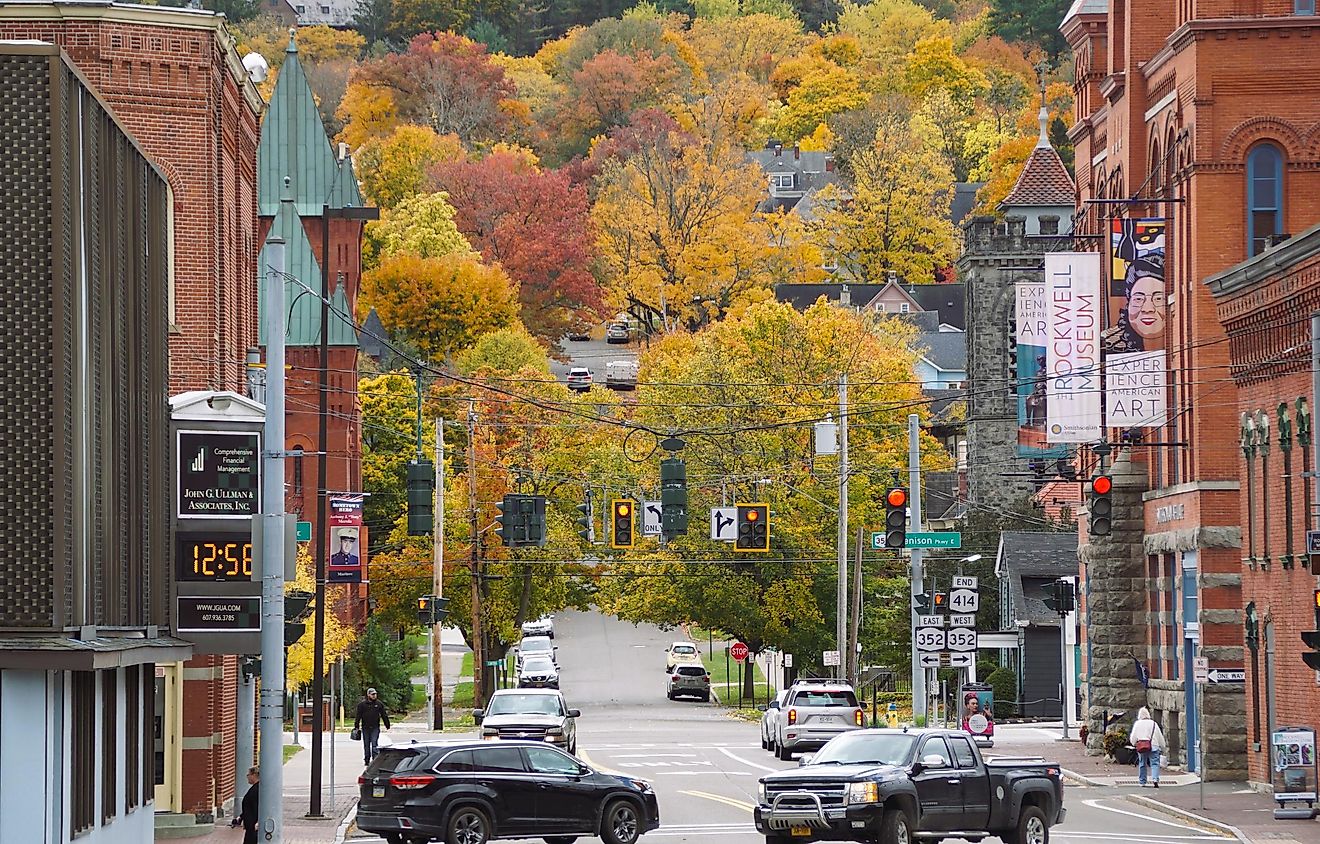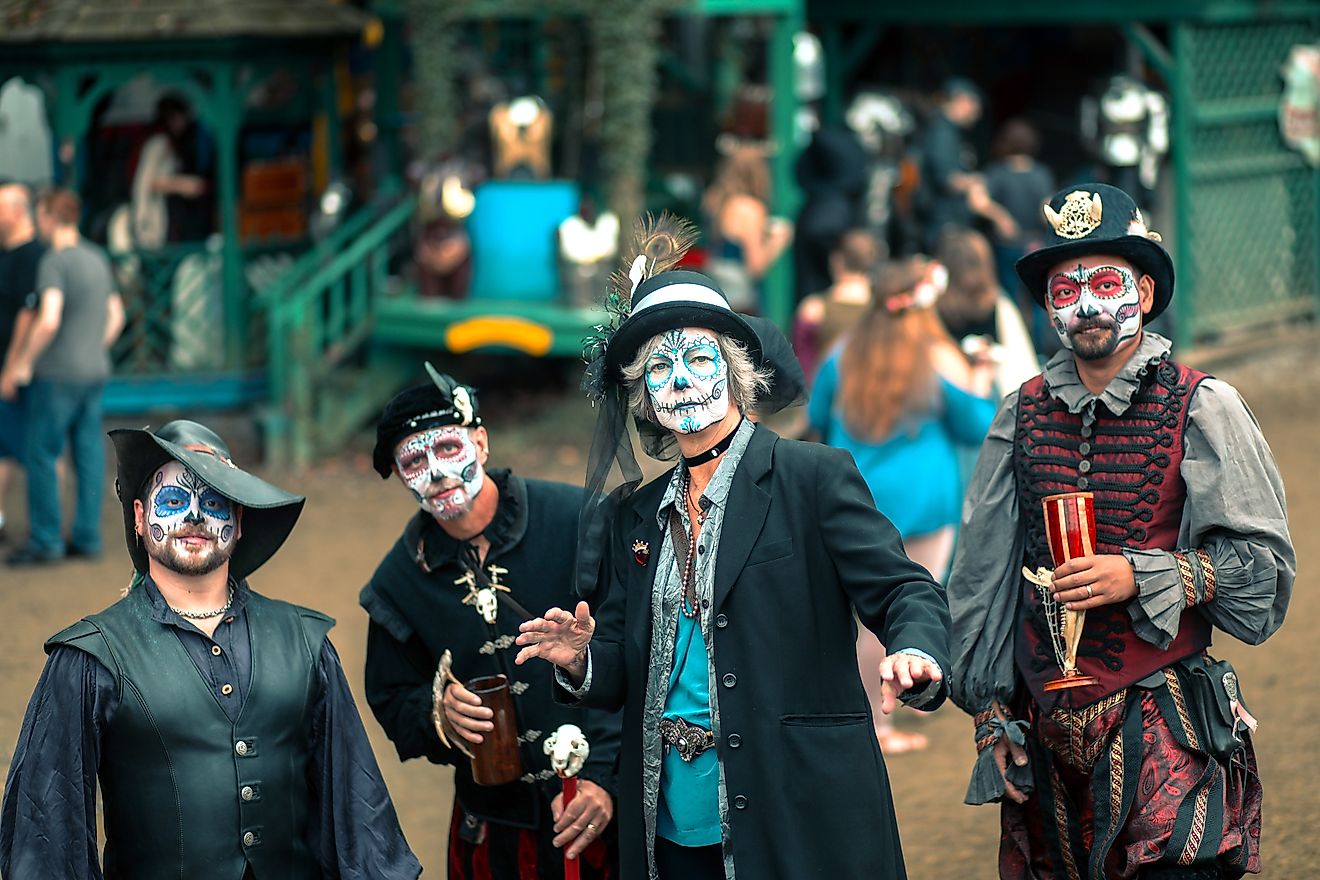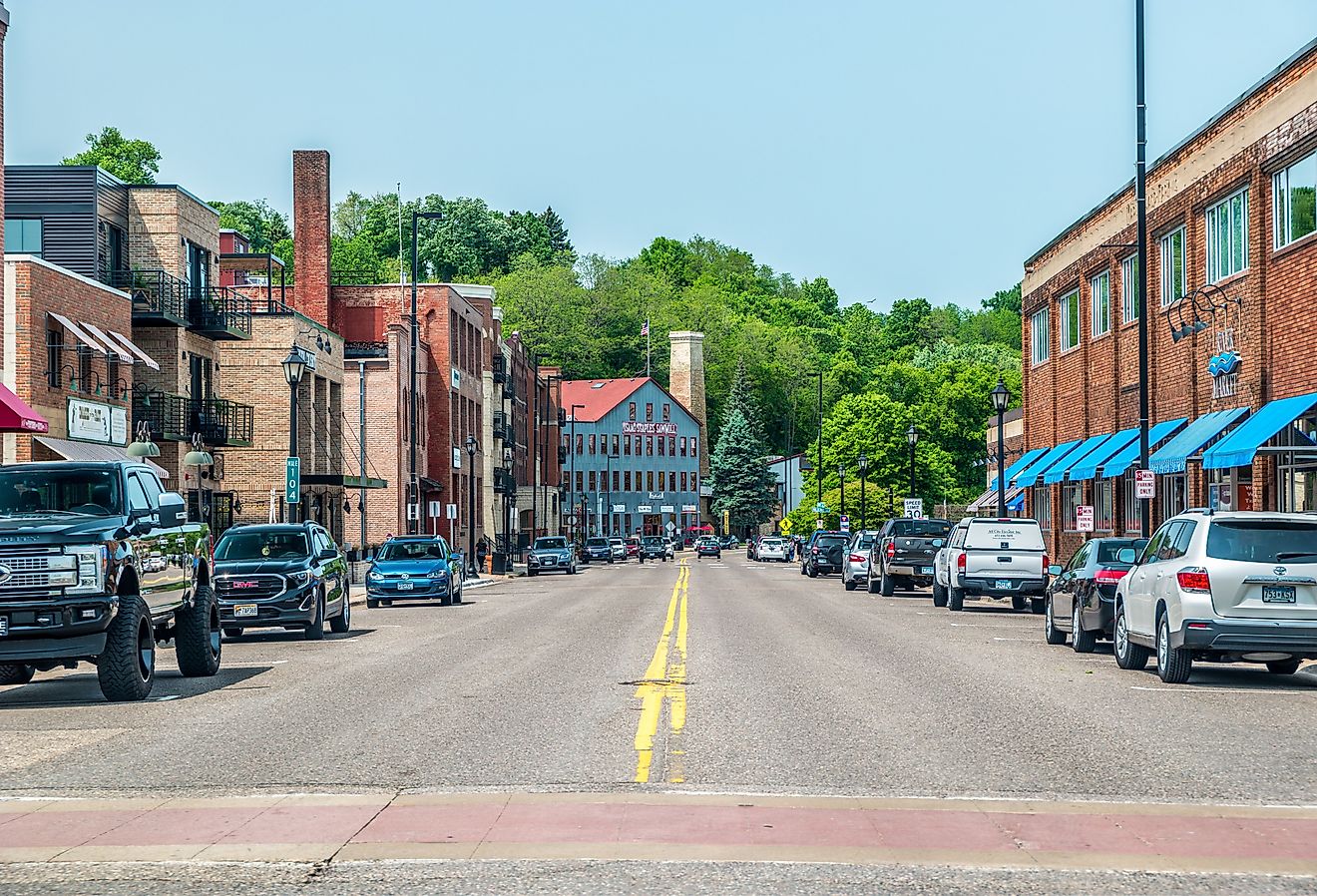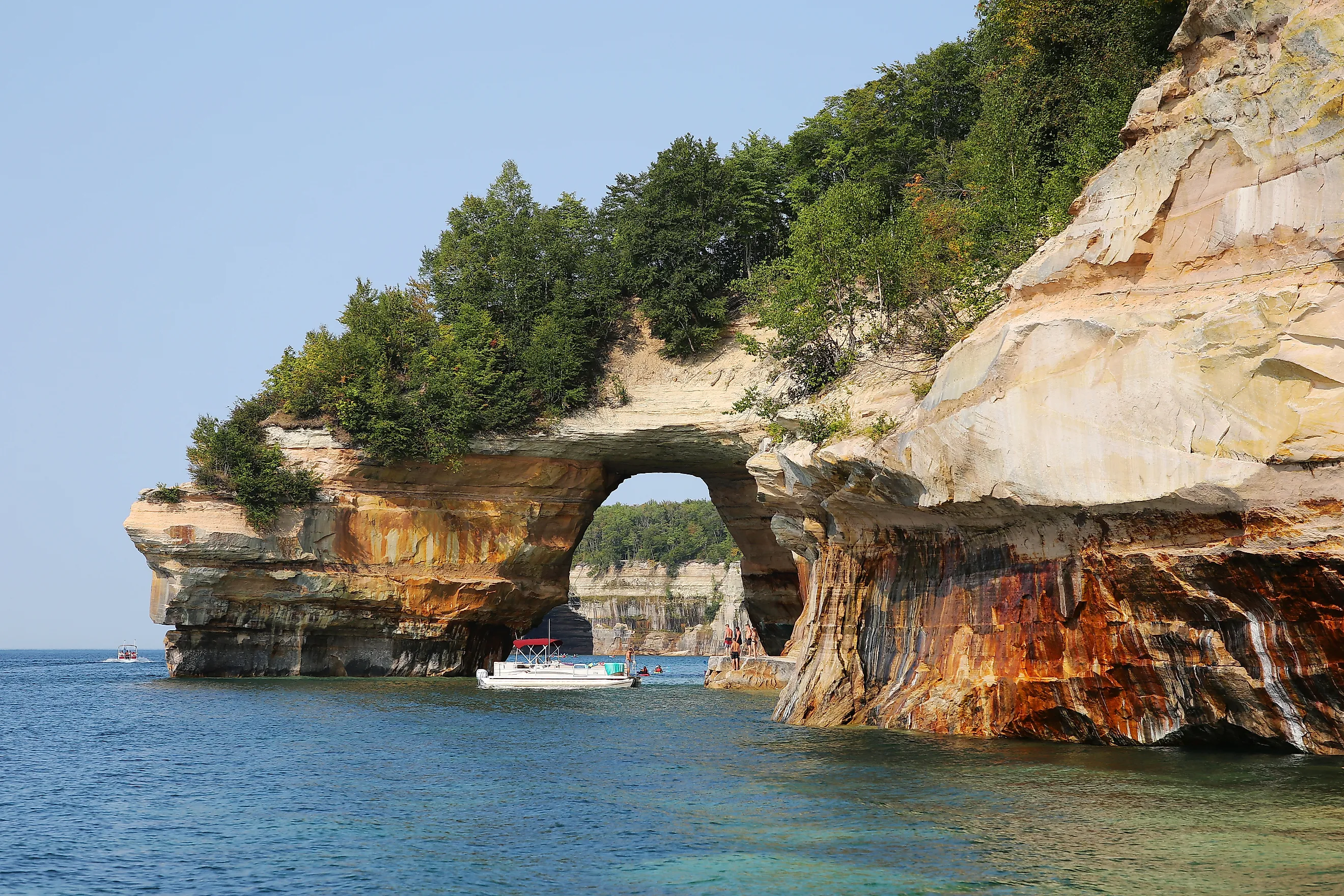
7 National & State Parks In Michigan You Have To Visit
See Michigan's greatest natural wonders through its diverse assortment of amazing state and national parks. From the grand forests up north to family-friendly beaches in the much more populous south, there is something for everyone in this classic Midwestern state; you just need to know where to look. With that in mind, here are our suggestions for the must-visit parks located here that you ought to check out at least once.
Pictured Rocks National Lakeshore
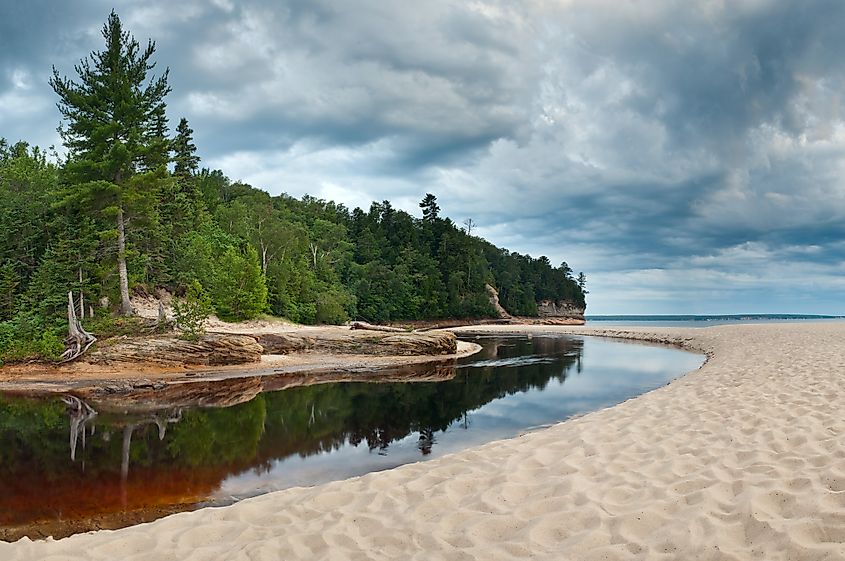
Located along Lake Superior’s southern shore, Pictured Rocks National Lakeshore stretches for 42 miles between Munising and Grand Marais. It was the first designated national lakeshore in the United States, established in 1966. The park is named for its multicolored sandstone cliffs that rise up to 200 feet above the lake. These formations, shaped by centuries of wind, water, and ice, are the park’s primary feature, visible by boat, kayak, or from scenic overlooks. Chapel Rock, Miners Castle, and Spray Falls are key highlights.
There are other things beyond the cliffs, however. The park contains numerous inland lakes, expanses of forest, sand dunes, and over 100 miles of hiking trails, including a section of the North Country National Scenic Trail. Backcountry camping, birdwatching, and snowshoeing are also popular, depending on the season. But to simply lounge by the water, Twelve Mile Beach and Sand Point Beach offer direct lake access.
Preserving a range of ecosystems unique to the Upper Peninsula, Pictured Rocks' geological, recreational, and ecological diversity make it one of Michigan’s most compelling outdoor destinations.
Sleeping Bear Dunes National Lakeshore

Sleeping Bear Dunes National Lakeshore spans 35 miles of Lake Michigan coastline in the northwest corner of the Lower Peninsula. The park is, of course, best known for its towering dunes, some rising over 450 feet above the lake, which were formed by glacial activity and are constantly shaped by persistent winds. Notably, Sleeping Bear Dunes was named “Most Beautiful Place in America” by a national poll in 2011. The most visited area is the Dune Climb near Glen Arbor, where you can embark on a thigh-burning hike directly up a massive sand face for lofty views above the water.
Inland, the park contains more delights, like quiet forests, wetlands, and inland lakes such as Glen Lake and North Bar Lake. For a beautiful cruise along the region's roads, the Pierce Stocking Scenic Drive offers a laid-back introduction to the landscape, with stops overlooking several dunes, hardwood forests, and the Manitou Islands. This route is particularly beautiful in the fall when the woodlands change color. Moreover, the historic Glen Haven Village and the Port Oneida Rural Historic District preserve 19th-century buildings and agricultural sites, providing context to the region’s human history.
Camping, hiking, kayaking, and cross-country skiing are all supported here as well, with well-maintained facilities and trail systems throughout. Moreover, the nearby Manitou Islands, accessible by ferry, provide a truly remote wilderness experience for backpackers.
Porcupine Mountains Wilderness State Park
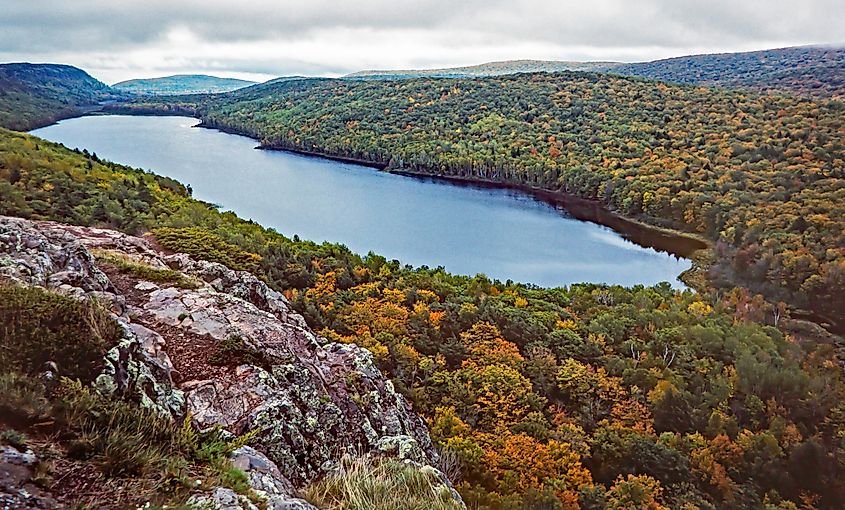
Covering roughly 60,000 acres in Michigan’s wild western half of the Upper Peninsula, Porcupine Mountains Wilderness State Park is the largest state park in Michigan and one of the few remaining truly large wilderness areas in the Midwest. It contains an unbroken tract of old-growth hardwood-hemlock forest, extensive river systems, and nearly 90 miles of hiking trails. Furthermore, the park’s surprisingly high elevation sets it apart, offering a rugged, untouched landscape that is unfortunately not as common in America anymore.
Lake of the Clouds is perhaps the most renowned single landmark here, a high-altitude lake (sitting at over 1,400 feet, quite high for Michigan) surrounded by thick forestland and accessible by a short trail from the main overlook. Moreover, the Escarpment Trail provides sweeping views of the Carp River Valley, while Presque Isle River’s multiple waterfalls can be reached via a well-marked loop trail with boardwalks and observation points.
For accommodations, this park includes backcountry cabins and rustic campsites, and for winter adventurers, a seasonal ski area, too. On the other hand, fall foliage, stargazing, and wildlife observation (including black bear and moose) are the main draws for off-season visitors. Regardless of how you want to appreciate it, the Porcupine Mountains serve as a critical ecological refuge and a benchmark for wilderness conservation in the Great Lakes region that ought to be seen as well as protected.
Tahquamenon Falls State Park
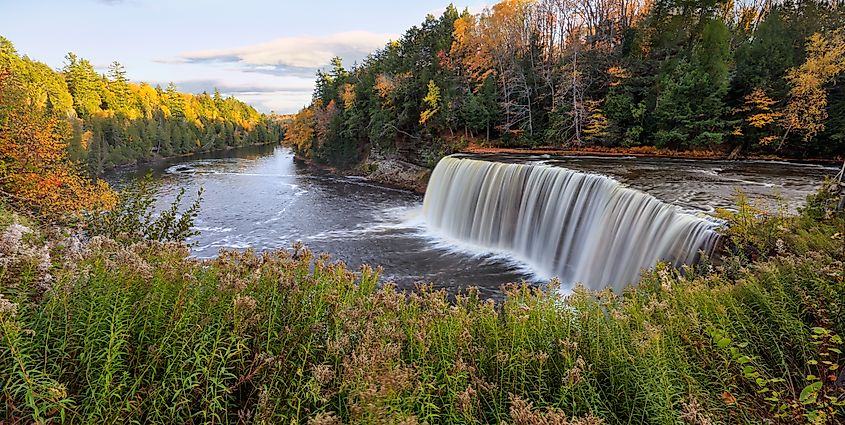
Resting in Michigan’s eastern Upper Peninsula, Tahquamenon Falls State Park spans almost 46,200 acres and centers around one of the largest waterfall systems east of the Mississippi. The Upper Falls, the park’s main attraction, stretches 200 feet across and drops nearly 50 feet, discharging more than 50,000 gallons of water per second during peak flow! Its tannin-rich water, stained by cedar swamps upstream, gives the falls a distinctive amber color.
A few miles downstream, the Lower Falls consist of five smaller cascades surrounding an island that can be reached by rowboat or a series of footbridges. Boardwalks and viewing platforms make both sections easily accessible, while over 35 miles of trails allow for deeper exploration of the forested interior. Tahquamenon Falls State Park remains open year-round, with winter facilities for camping, snowmobiling, and cross-country skiing.
Isle Royale National Park
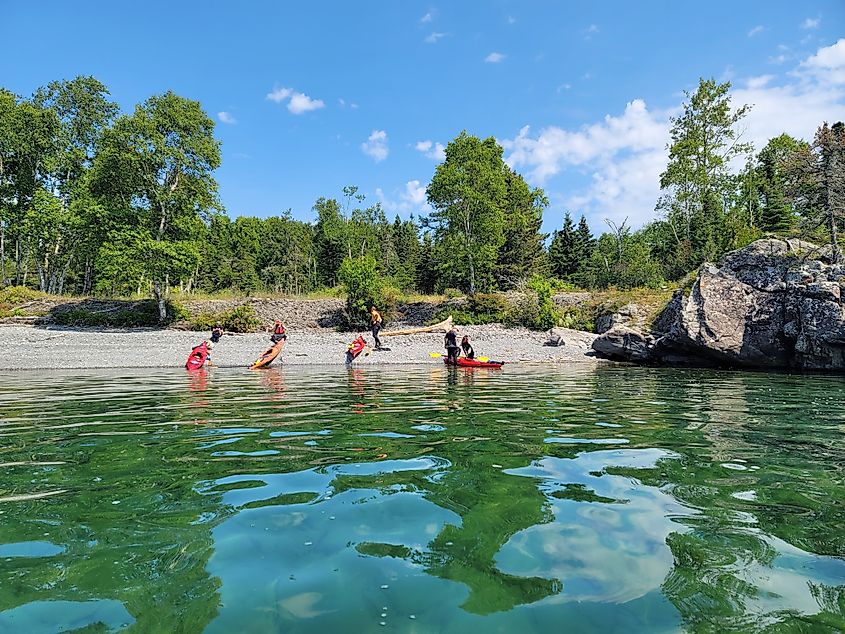
Situated in the far northwest corner of Lake Superior, Isle Royale National Park is Michigan’s only true national park, and one of the least visited in the U.S., a reflection of how remote its location is. Accessible only by boat or seaplane, the park encompasses the 45-mile-long Isle Royale and over 400 smaller surrounding islands.
No vehicles are permitted on the island, preserving its peaceful, undeveloped environment. The park is also a critical site for the long-term study of predator-prey dynamics, specifically the interaction between wolves and moose. Also note that Isle Royale is open seasonally from mid-April to late October.
This isolated archipelago is known for its rugged shoreline, untouched forests, and extensive trail network covering more than 160 miles. Backpackers often follow the Greenstone Ridge Trail, which runs the island’s length and provides access to interior lakes, high ridges, and a number of different ecosystems. Kayaking, canoeing, scuba diving, and fishing are popular in the surrounding cold, clear waters, which are also home to numerous shipwrecks.
Holland State Park
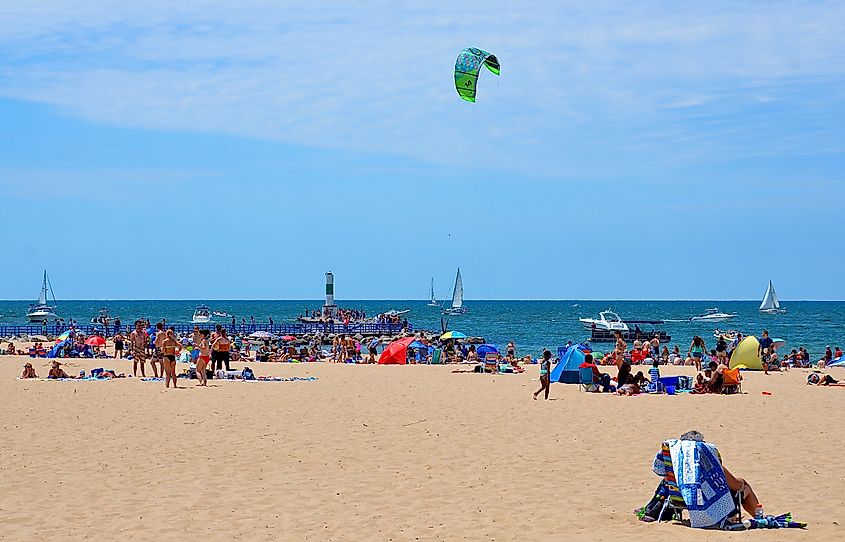
Situated along the southeastern shoreline of Lake Michigan, Holland State Park draws steady seasonal crowds due to its accessible beach (located a short drive from Grand Rapids), views of the iconic Big Red Lighthouse, and proximity to the historic city of Holland.
The park is split into two units, Lake Macatawa and Lake Michigan, each connected by a channel used by recreational boats and fishing vessels. The Lake Michigan side features a broad sandy beach with designated swim areas, restrooms, and a popular pier walkway leading out toward the lighthouse. Conversely, the Lake Macatawa unit offers a more sheltered shoreline, ideal for kayaking, paddleboarding, and launching small boats. Campgrounds on both sides fill quickly during peak summer months, so book soon if you're interested in checking this one out!
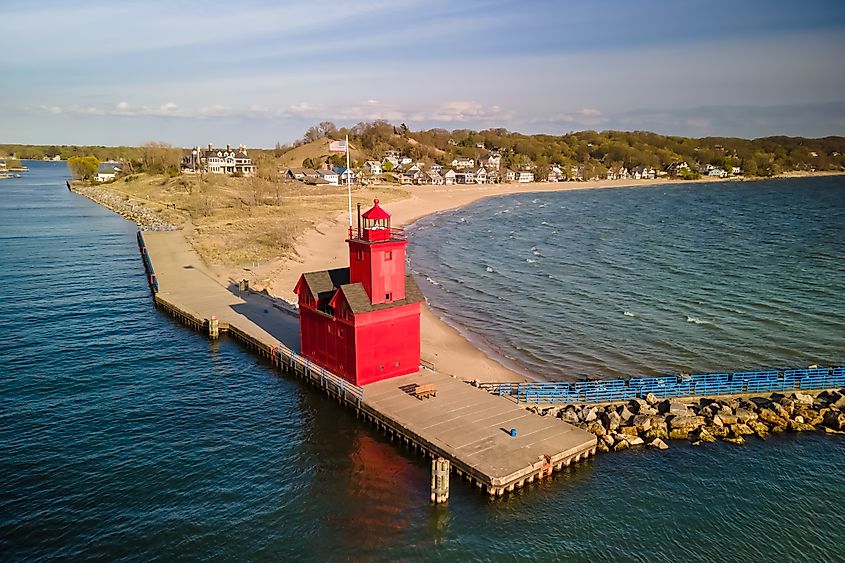
Though smaller than many of Michigan’s more wilderness-focused parks, Holland State Park serves as a key entry point for anyone looking to experience the Great Lakes without venturing far from urban amenities. Its paved trails, picnic areas, and sunset views make for a pleasant afternoon outing from big city life. The park also connects to Holland’s broader trail system and is located near cultural points of interest like Windmill Island Gardens and the city’s famed tulip festival.
William C. Sterling State Park
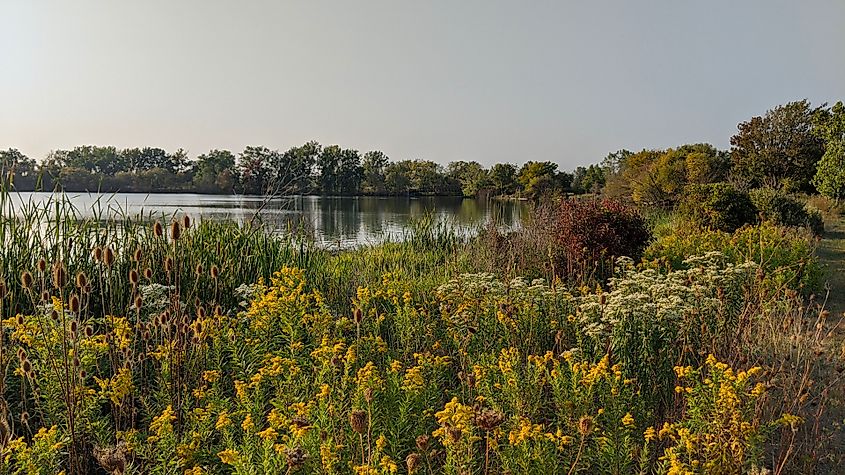
Found just south of Detroit and near the city of Monroe, William C. Sterling State Park covers roughly 1,300 acres and stands as Michigan’s only state park on Lake Erie. It includes a full mile of public beachfront, seven miles of hiking and biking trails, and a series of man-made lagoons for fishing, paddling, and lounging.
The park’s wetlands, restored over decades to provide habitat for waterfowl and migratory birds, are the main draw beside the waterfront. A paved loop trail circles the central lagoon, equipped with observation decks and interpretive signage. Keep your eyes peeled, and you may spot great blue herons, egrets, and seasonal waterfowl.
In addition to day-use facilities, like boat launches, picnic areas, and a sandy swimming beach, the park also maintains a large modern campground with 256 sites, plus a collection of lakefront cabins that have been added in recent years. Another unique feature is the fact that the beach faces east, making it a great spot in southern Michigan for sunrise views over open water.
See These Natural Wonders Of Michigan Today
Whether you're looking to escape into the remote wildernesses of the Upper Peninsula or simply need to get out of the city for an afternoon or two, the above-mentioned parks are designed to appeal to every kind of traveller. Paddle around Isle Royale, go on a multi-day camping trip in the Porcupine Mountains, or spend an afternoon kicking back beside one of the Great Lakes; whatever you decide to do, it can definitely be done in the Wolverine State.
